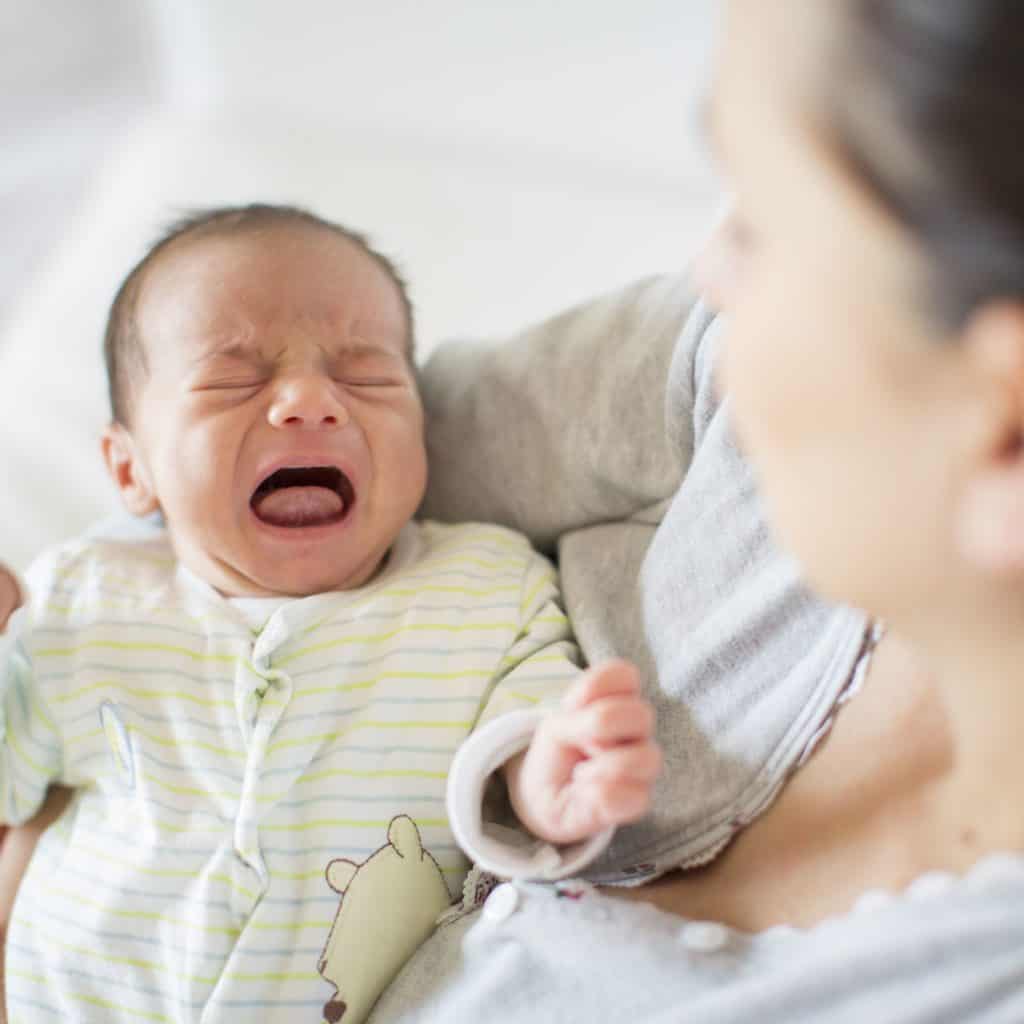
Table of Contents
To have a baby cry out of its lungs to put them to sleep might be considered a rather cruel method of putting a baby to sleep by some. However, the crying-out method is also sworn on by many moms, and here’s everything you need to know about it!
If there’s anything universally more difficult than getting out of a warm blanket to go to work, it is trying to put a toddler to bed. Typically, a baby should begin to fall asleep on their own for a period of at least 6 hours in one stretch by the time they are in the age range of 4-6 months. If not, it is time for you to sleep train your baby, and one of the most common and perhaps the easiest ways of sleep training a baby is by using the “cry it out” method (CIO).
Sleep Training Methods: What is the "cry it out" method of sleep training?
As the name suggests, CIO or cry it out the method of putting a baby to sleep is when you leave the baby to cry as long as they want to and let them tire themselves out to sleep. As a baby cries, the parents are supposed to leave the baby alone, let the baby get tired owing to all the crying, and hence fall asleep. While this might seem torturous at first, the bigger picture of instilling a sense of sleep pattern and routine in your baby’s day should be the focus.
Also known as the extinction method, it is important to note that a baby should not be assisted by any adult whatsoever as a part of CIO. The baby should be left alone and should not be fed, rocked, or sung to sleep. You may, however, use a baby monitor for reassurance and to keep an eye while not being physically present in the baby nursery.
What is the goal of baby sleep training?
Unlike what is commonly assumed, sleep training a baby does not mean or aim to put a baby to sleep at a particular time and neither does it mean to keep a baby from waking up in the middle of the night or to get them through the night without an extra feed. A nap training for babies is done only to make the baby independent enough for them to fall asleep on their own- without adult assistance and outside their laps.
Tips and tricks on letting your baby cry it out
If you are in the pursuit of training your baby to fall asleep, here are some tricks and tips on letting them cry it out-
- Regulate the baby’s afternoon naps
Ensure that your baby does not sleep too much during the daytime as that might be keeping them up at night
- Anticipate when your baby is sleepy
The most common signs of a sleepy baby are when they start rubbing their eyes or start sucking on their thumb or just tend to be generally unreasonably cranky. Anticipate their sleepiness to tuck them in the crib and get them ready for CIO.
- Tuck the baby in while they’re awake
Since the basic aim of sleep training for a baby is to help them learn how to sleep on their own, it is necessary to tuck them in while they are still awake. Put the baby in the crib, give them a sweet kiss, and a couple of cheek pats, and perhaps follow a parent-baby bedtime routine before you leave the room to let them figure out that it’s time to sleep.
- Do not give up
Seeing your baby cry (or rather wailing in this case ) is a tough spot and we do understand that. However, as a parent who is trying to sleep train the baby, you mustn’t give in even if the baby seems to protest. It is important to understand that you are doing this for your baby’s greater good and it’ll be worth it all once you see them falling asleep on their own with no assistance required whatsoever!
How long should you let your baby cry it out when sleep training?
There stands no definite time frame for how long a baby should be let to cry when using the cry it out method for sleep training. The time taken for a baby to exhaust themselves with all the crying and to finally fall asleep varies greatly from baby to baby. While some might take as long as 45 minutes, to begin with, some might fall asleep in just 10 minutes of crying.
Parents generally experience their babies crying a lot and for a longer duration in the initial days, but the crying eventually gets shorter and then to almost nothing over a couple of days as they get used to it.
At what age should I try the cry-it-out method for my baby?
Babies typically are suggested to be ready for sleep training when they are 4-6 months old. However, it depends on a baby’s personal needs and comfort that defines when exactly is the “right” time to practice CIO. The 4th-6th month mark is suggested based on the fact that it is by this age that babies develop or grow big enough to be able to sleep through the night without having to feed.
It should also be noted that ‘sooner the better’ is a mantra here since the brains of older babies are mature or wise enough for them to understand that they will be picked up or they will be rocked if they cry. The main goal here is for you to make it a point to your baby that you will not give up and that the crying will not have you pick them up. (We know it sounds mean but remember the long term bigger picture?)
Should cry-it-out be followed only at night or also during day naps?
Ideally, you should have your baby cry it out for the naps as well as the night’s sleep. However, if your baby’s day nap is less than 30 minutes or around that time, you will not have enough time on your hands. Letting a baby cry to exhaust themselves and then fall asleep requires time and patience which parents may not have in the daytime.
If you already are training your baby for their nighttime sleep, they should anyway get used to sleeping on their own. They might even exhibit the sleep-independence in their day naps on their own over a period of time. Not only will they get accustomed to the fact that when you put them in the crib it’s time for them to sleep but will also have discovered how to self-soothe with methods like chewing on a teether to fall asleep.
Cry-It-Out method v/s Ferber method
Feber’s method of training a baby to sleep is an alternative, gentler method of putting a baby to sleep on their own. The theory was outlined in the 1985 book Solve Your Child’s Sleep Problems by Dr. Richard Ferber, the former director of the Center for Pediatric Sleep Disorders at Children’s Hospital Boston.
- The cry it out (or extinction) method requires tucking a baby in their crib and letting them cry until they exhaust themselves and fall asleep.
- The Ferber method (or graduated extinction) on the other hand requires you to tuck your baby in, let them cry for a couple of minutes, and then check in on them for a minute or two. This gives the baby a sense of assurance and comfort.
- The amount of time you’d be leaving the baby on their own before checking in on them should be increased gradually. Once the baby begins to fall asleep on their own, it is time to stop the check-in in too. You could still, perhaps, check in on them via a baby monitor.
My baby threw up while crying it out at night. What do I do?
Though uncommon, some babies might get overly worked up as a result of incessant crying during training and hence, may throw up. This throwing up is usually normal and should not be an issue or a reason to be alarmed. It would be difficult but do not give up and try to not scrape your original plan at least for the following 3-4 days. The crying and throwing up should typically stop or at least considerably reduce over the course of nights.
It should also be made sure that you do not feed your baby too close to bedtime as undigested food might further aggravate the throwing up. You may also want to defer the training for a couple of weeks or reach out to your doctor for a professional consultation at this point.
Is the crying it out method of sleep training damaging?
While some critics have sure conducted studies and conducted case studies to conclude that “a babies’ levels of the stress hormone cortisol remains high even after they stopped crying and went to sleep on their own,” there also have been papers that have advocated the opposite.
The American Academy of Pediatrics (AAP), in fact, has published their own paper on the basis of findings of a large study in 2012 concluding the method as “healthy and important when it comes to babies’ development.” The study also further says that sleep-trained babies were less vulnerable to emotional, behavioral, or psychological problems by age 6.
Final Thoughts- When to stop letting a baby cry it out?
The cry it out method takes time and it is not a method that can sleep train your little one overnight. As long as your baby is crying out in a safe and monitored environment, leaving them alone to cry as much as they want should not be a worry. Always ensure that they are not surrounded by suffocating cushions or are not wet in the diapers before you tuck them in the crib.
When trying the CIO, it is also necessary to account for potential reasons that could be stressing your baby and not letting them sleep at night, for example, a new sitter, a new sibling, or a change of house. CIO also is not a method that works on all babies as not all babies are alike and hence, do not push your baby too much. Listen to your parental instinct and defer the plan for a few weeks until the baby seems less troubled. If your baby tends to throw up multiple times over the course of nights, it could also be due to an underlying cause, and consulting a professional at this point should be a safe bet.
Whatever method you choose, the extinction or the traditional cry it out method or the Feber method, just stick to a plan, watch them on a monitor if you have to but do not give up on sleep training your baby. It is for their good!
Cry-it-Out Method FAQs:
1) What are some popular sleep training methods?
2) What are some non-crying sleep training methods?
3) Can you sleep train a 3 month old baby?
Reviewed By:

Nimrat Sidhu - Pediatration
Dr. Nimrat S Sidhu is a practicing pediatrician for about 5 years now and holds an MD pediatrics degree. She was the topper of her batch, has always had a keen interest in her core medical field, and is specially trained for neonatal resuscitation.
She has published multiple research papers on pediatrics and is interested in topics like Neonatal care, skincare, baby growth, vaccination, growth, and development.









